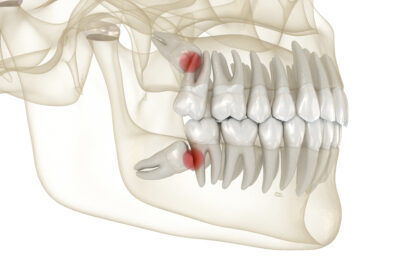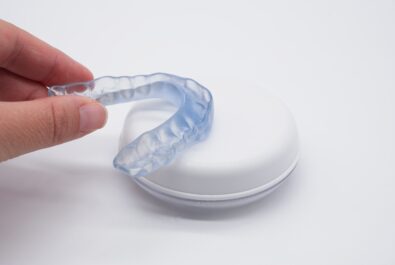Tooth enamel is a fascinating substance. With a 96% mineral content (primarily crystalline calcium phosphate), tooth enamel can withstand up to 200 pounds of pressure. Thanks to your saliva, tooth enamel can heal itself to a degree through remineralization. However, if an area of tooth enamel loses enough mineral content, bacteria can invade and infect it, creating the cavities we associate with tooth decay. Today, we’re looking at the progression of tooth decay and how the location of a tooth can impact its susceptibility to decay.
How Does Tooth Decay Happen?
The process begins when you eat acidic foods. Immediately after eating, acids pull minerals from the surface of the teeth, causing your enamel to soften. In a healthy mouth, compounds found in saliva neutralize these acids and reharden your teeth within 30-60 minutes. However, if you have inadequate saliva levels or if the foods and drinks you eat are exceptionally high in acid, the enamel stays soft.
That’s where plaque comes in, making an already bad situation worse. After you eat, certain strains of bacteria living in your mouth feed on sugar particles left behind. The bacteria actually ferment sugars and excrete an acidic by-product, which further sucks the minerals from tooth enamel. Demineralized patches called “carious lesions” form in the surface layer. Plaque builds up in these areas, creating more acid and eventually leading to a collapse in the surface enamel layer. These collapsed areas create pits called “cavities.”
If left untreated, more plaque builds up in the cavity, eating deeper into the dentin and pulp layers of the tooth. If the pulp becomes infected or if large cavities create extensive structural damage, you may need to undergo invasive treatments like root canal therapy or tooth extraction.
Are Certain Teeth More Susceptible to Decay?
Tooth decay most commonly occurs in the following areas:
- The topmost biting surfaces of your molars. This area has natural pits and crevices where particles of food and plaque colonies like to hide.
- Between teeth. Tight spaces between teeth provide ample room for bacterial plaque to build up and eat away at enamel.
- At the edges of dental work. Dentists call the space where a dental restoration (like a filling or crown) meets the natural tooth structure a “margin.” These tiny spaces create hiding places for plaque and bacteria.
About Shawn Hofkes, DDS
With advanced training in oral and maxillofacial surgery and certification in oral and IV sedation, Shawn Hofkes, DDS is qualified to provide advanced dentistry services from our state-of-the-art dentist office in Cerritos, CA. To schedule your appointment or consultation with Dr. Hofkes, contact us today. We proudly serve patients of all ages from Cerritos, Lakewood, Long Beach, Buena Park, and all surrounding communities.














